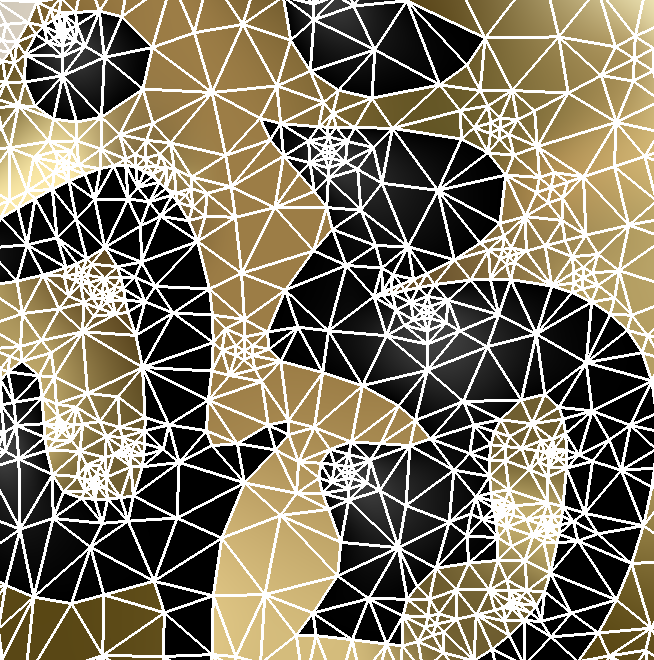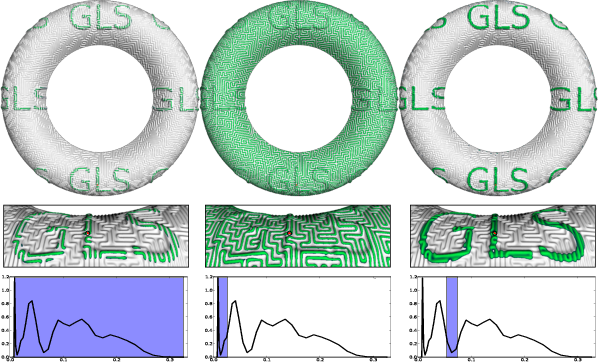Section:
New Results
Axis 4: Editing and Modeling
Figure
11. A complex image obtained using our vectorial solver (a), with a close-up view showing the automatically generated intermediate triangle mesh (b). |  | | (a) | (b) |
|
Free form vector gradients
The creation of free-form vector drawings as been greatly improved in recent years with techniques based on harmonic or bi-harmonic interpolation.
Such methods offer the best trade-off between sparsity (keeping the number of control points small) and expressivity (achieving complex shapes and gradients).
Unfortunately, the lack of a robust and versatile method to compute such images still limits their use in real-world applications.
We developed a vectorial solver for the computation of free-form vector gradients based on a non-conform Finite Element Methods (FEM).
Its key feature is to output a low-level vector representation suitable for very fast GPU accelerated rasterization and close-form evaluation (fig. 11 ).
This intermediate representation is hidden from the user: it is dynamically updated using FEM during drawing when control points are edited.
We demonstrated novel usages of vector drawings such as instancing, layering, deformation, texture and environment mapping.
Finally, we also generalized and extended the set of drawing possibilities, in particular, by showing how to locally control vector gradients.
This work has been published at SIGGRAPH Asia [16] and featured by the 3DFV website [24] .
Growing Least Squares (GLS) for the Analysis of Manifolds in Scale-Space
We created a novel approach for the multi-scale analysis of point-sampled manifolds of co-dimension 1. It is based on a variant of Moving Least Squares, whereby the evolution of a geometric descriptor at increasing scales is used to locate pertinent locations in scale-space, hence the name “Growing Least Squares (GLS)”. Compared to existing scale-space analysis methods, our approach is the first to provide a continuous solution in space and scale dimensions, without requiring any parametrization, connectivity or uniform sampling. An important implication is that we identify multiple pertinent scales for any point on a manifold, a property that had not yet been demonstrated in the literature. In practice, our approach exhibits an improved robustness to change of input, and is easily implemented in a parallel fashion on the GPU, and it can be used in a wide variety of applications. For example, the GLS can be used for the detection of similarity, according to a given scale range (see Figure 12 ).
This work has been published at the Symposium of Geometry Processing [18] .
Figure
12. GLS Multi-scale similarity. Top and middle rows: For a selected point
(in red), similar points are selected (in green) via our dissimilarity measure. The
similarity is computed for each vertex and interpolated per fragment during the
rendering. Bottom row: the type of selected feature depends on a user-controlled
global prior (shown as a blue box), which is locally refined by our geometric variation.
In (a), all scales are selected. In (b), only the fine displacement pattern
emerges. In (c), the large-scale GLS letters are properly segmented. |





